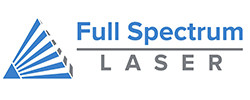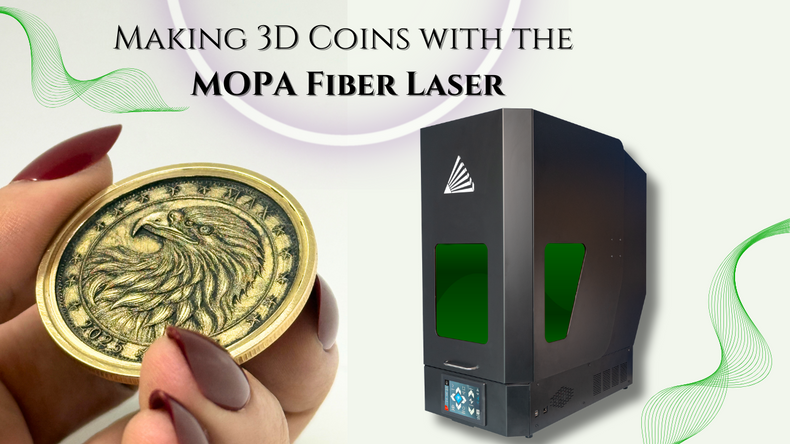When it comes to lasers and laser projects, we’re all thinking the same thing; which one is best to use for what I’m making? There are three different types of lasers which is what makes each of them so unique.
You have a CO2, Fiber, and a UV laser.
Let’s break down these three lasers and find out which is the best fit for what you're looking for!
CO2
CO2 lasers are great cutters and engravers! They work awesome with materials like rubber, glass, wood, acrylic, ceramic, and even paper! CO2 lasers are very common in the laser world for all of your industrial cutting and engraving needs. A lot of these lasers are used by those with a hobby and/or start-up businesses.
How Do CO2 Lasers Work?
CO2 lasers use gas in a sealed tube. They operate with a 10,600 nm wavelength. These lasers usually come in a sealed unit or a format that is called a gantry laser. These formats are different however, so let’s get into it!
Difference Between Sealed Unit and Plotter.
A gantry laser is a system of motion. It contains rails and belts. Attached are 3 or 4 mirrors that deliver the laser beam through deflection to carry a focus that typically contains a single layer lens. While the laser is going, the lens moves around with the work area to provide a laser that is focused to run the job you’re working on. A few good examples of a gantry laser is our Muse CO2 lasers.
A sealed unit, also known as a Galvo laser, usually contains 2 mirrors that are attached to galvanometers. The laser beam is focused through a fixed lens. This lens is referred to as the F-Theta lens. This is technically known as a beam deflection laser from the work area that is constrained by what the lens offers.
What’s great about a CO2 laser is that the quality of the beam delivers a life expectancy of over 20,000 hours. As a maker or someone who wants to start, it’d be crazy not to get your hands on a CO2 laser for yourself! If you’re looking for a larger bed for those big projects, we recommend checking out our Muse Titan while you’re at it!
FIBER
For our next laser, we present to you, the fiber! Fiber lasers are your best option for some marking, engraving and they are especially great for metal! A fiber laser can easily be used and adjusted to your liking to get the depth, speed, and the look that you are going for with how user-friendly and easy it is to use! They’re also great for personalizing or customization for projects like bags, creating QR codes, marking your smart watch band, jewelry, and the list goes on! Here are some that we offer at FSLASER.
How Do Fiber Lasers Work?
Fiber lasers operate at wavelengths of 1,064nm. They do well with metals however, the best part of it being is that it does great on many other materials too! When a fiber laser comes in contact with an object, it will expose deep material by “engraving” or “carving” by these physical and chemical reactions. These are caused by the photons (which is light energy) reacting to the area it is working on. Fiber lasers convert more of this energy to light in comparison to CO2 for example. What’s also good to note is that there are two types of fiber lasers; Standard and MOPA.
Difference Between Q-Switched & MOPA
Standard fiber lasers are the most commonly found source of a fiber laser. They are usually not as efficient nor provide a wide range of pulse modulations however. In comparison to a MOPA laser, this means that they are less flexible and are much more prone to shaping or deforming different types of materials. You can find our Galvo Fiber machine HERE.
A MOPA laser has lately become far more popular as they are much more flexible in comparison. An interesting thing to note is that not all MOPA systems are the same. Some good MOPA systems will have a wide range of adjustments for the pulse width and frequency that can work towards specific materials. They are definitely less prone to creating those deformations that you do not want. MOPA laser sources offer both quality and modulation versatility. You can find our MOPA lasers through the link HERE.
UV Lasers
UV lasers work differently from CO2 and Fiber. UV lasers use a lower power when marking which prevents any damage to the material’s surface. This makes them great for etching your projects! UV lasers work great on glass, silicone, metals, plastic, and even diamond! You can get amazing markings using a UV laser with pretty much almost anything.
How Do UV Lasers Work?
With a much shorter wavelength than the CO2 and Fiber, a UV uses a process called, “cold processing”. For that reason, they are operating at 355 nm! When it comes to the cold processing, UV lasers throw out photons with high-energy in the ultraviolet spectrum. With that, these photons then break the chemical bonds in the material and cause them to go through a process of non-thermal damage.
As a UV laser’s wavelength is one-third of standard wavelength lasers, this is referred to as THG lasers (third-harmonic generation). When passing a standard wavelength laser at 1064 nm through a non-linear crystal, this wavelength is achieved. It is then reduced to 532 nm, passing through another crystal, and continuing to reduce its wavelength further all the way down to 355 nm.
Now that all the science stuff is out of the way, in summary, the UV process with marking is extremely clean, fine and controlled. It’s great for delicate work and when you are looking for accurate and fine detail. However, the UV is not normally the best laser to choose for when cutting certain materials.
You can find our UV laser through the link HERE.


